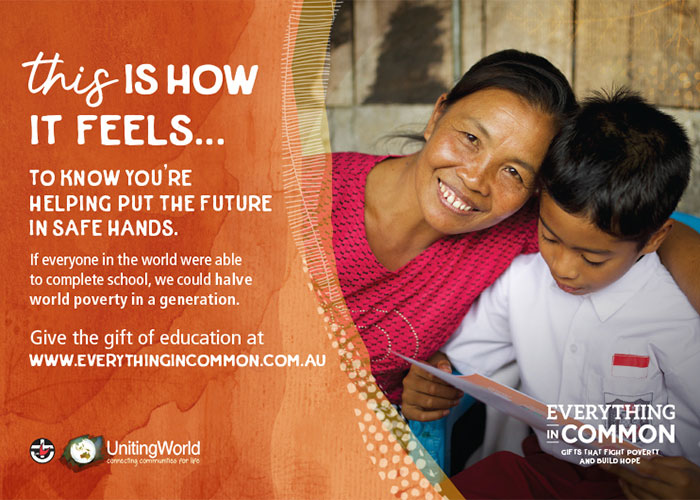Angelo Gavrielatos, the Federal President of the Australian Education Union, welcomed the central tenet of David Gonski’s report that “differences in educational outcomes must not be the results of differences in wealth, income, power or possessions” and emphasised that changes to the Commonwealth Government funding model are key to implementing the changes advocated by Gonski, as it is “Commonwealth funding arrangements that have contributed to the growing inequity and it is the Commonwealth that has the revenue-raising capacity” to provide the $5 billion per year required for the recommendations. He stressed that the amount is the less than 0.5 per cent of GDP and that, on his second favourite page of the report, Gonski made it very clear that unless we act and act now there will be serious social and economic consequences for Australia.
Mr Gavrielatos expressed his dismay that, while in April the NSW Premier is on record as having said that we ignore Gonski at our own peril, the State Government has since announced cuts of $1.7 billion from schools and TAFE colleges.
Former Labor NSW Minister for Education and Training, Verity Firth, is now the CEO of the Public Education Foundation. She was asked to speak about disadvantage and about how Gonski seeks to address it.
She outlined how education performance in Australia has slipped over the last decade, whereas it is increasing in other OECD countries. At the same time, the Australian system has become increasingly unequal, despite the depiction of Australia as an egalitarian society. In 2009, 25 per cent of the lowest socioeconomic status (SES) students failed to meet minimum literary standards. Disparities in students’ literary capabilities also increased with age, with a five-year difference between highest and lowest performing quintiles by year 9.
She spoke of the cause of the lack of equity in Australia’s extremely competitive and mobile education system where the division of 63 per cent government, 21 per cent Catholic system and 16 per cent independent schools, allows parents with financial resources and geographic options to choose to send their child to a different school if they perceive standards are inadequate.
Research that the report relies upon identifies that educational performance is not just related to the SES of the individual child, but it is impacted by the student’s cohort. Australia, more than other OECD countries, has a dense concentration of both low SES and high SES schools. A third of students attend a school where average SES is below the average SES of the nation as a whole, with 60 per cent of low SES students at schools with low SES profile, which is substantially higher than for comparable OECD countries.
Government schools do as well, if not better, in the “value add” of the school which measures the difference between attainments of students when they arrive at the school compared to when they leave. This particularly applies to low SES students who attend higher SES schools. The best performing nations have both excellence and equity.
Ms Firth pleaded with the audience to campaign for the implementation of the report’s recommendation as “Gonski cuts away the stultifying politics of recent years and says let’s just fund on need”.
John Farrell, the principal of Our Lady of Mount Carmel School, introduced his presentation with an example of the typically unexpected demands that he faces at his school in Waterloo. That afternoon an 8 year-old boy wasn’t picked up from school, so he walked him home. When no one was home they went on a bit of a walk around the streets of Redfern to locate an aunty who lived a couple of blocks away. This, he said, was typical of so many families in the area who, without hesitation, take in a couple of extra children in times of need.
“It was music to our ears that the Federal Government’s response to Gonski’s emphasis is on children’s needs,” he said. His 134 students are 64 per cent Indigenous, 32 per cent have identified special needs and 85 per cent speak a language other than standard English at home (keeping in mind Aboriginal English is an identified language) and 80 per cent of the students live in Waterloo and Redfern public housing.




